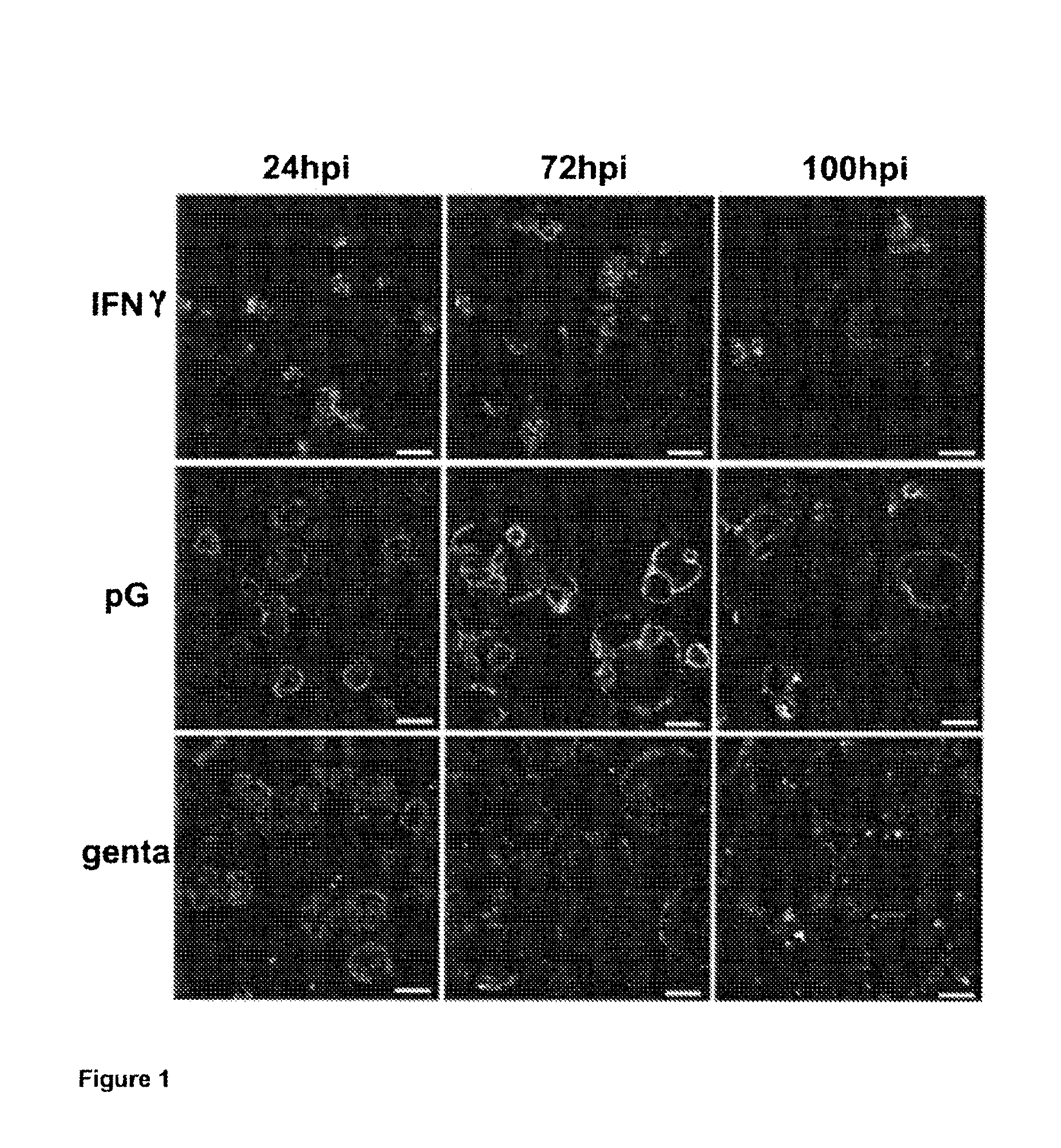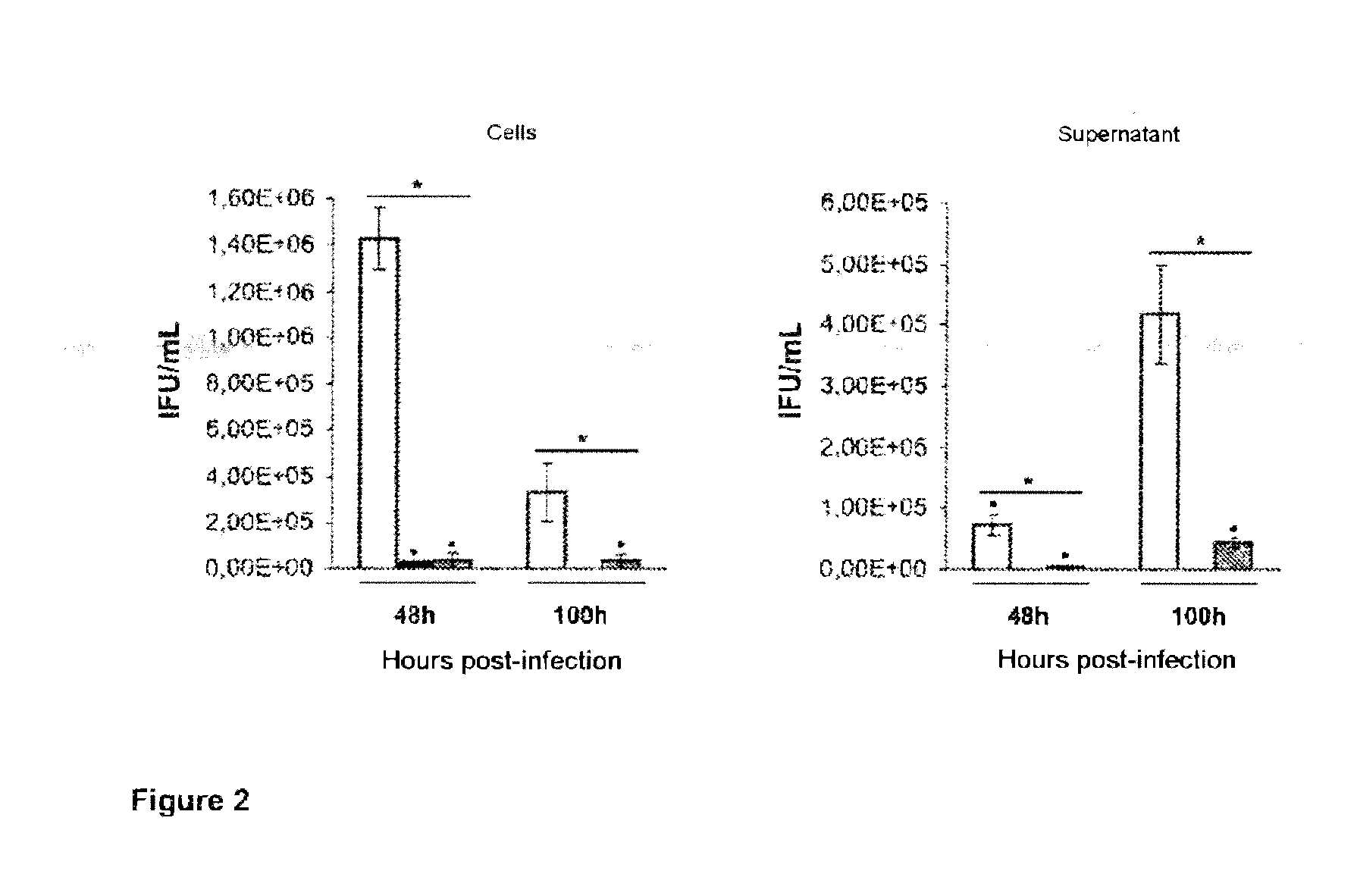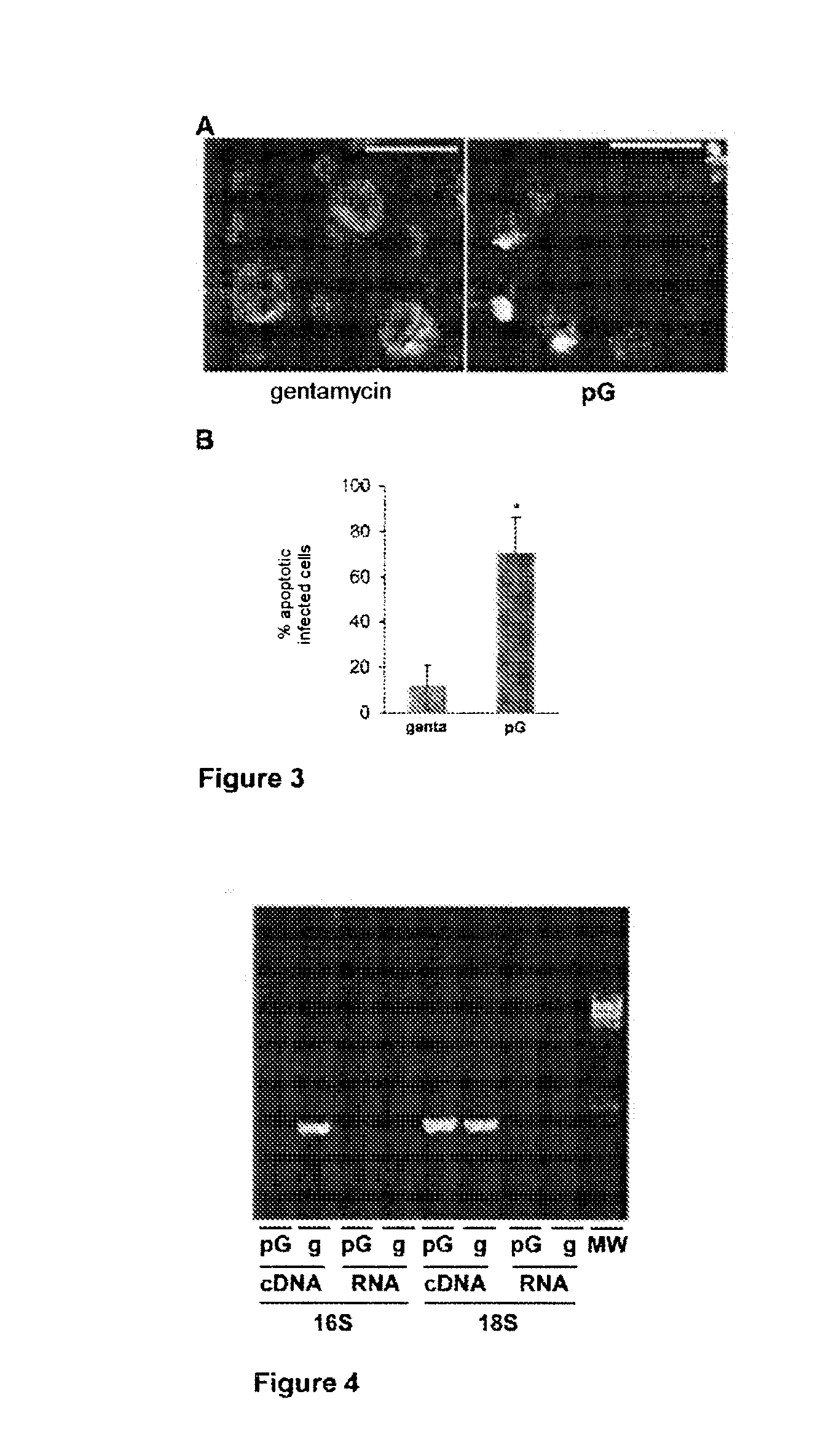Treatment of chlamydiaceae infections by means of beta-lactams
a technology of chlamydia and betalactam, which is applied in the direction of antibacterial agents, drug compositions, metabolic disorders, etc., can solve the problems of chlamydia /i> being frequently asymptomatic, going untreated, and serious pathologies in humans or animals
- Summary
- Abstract
- Description
- Claims
- Application Information
AI Technical Summary
Benefits of technology
Problems solved by technology
Method used
Image
Examples
experimental examples
[0078]1. Materials
[0079]1.1. Antibodies and Reagents
[0080]Culture media (DMEM, Ham's F-12, Ham's F-12K, RPMI-1640), FCS and gentamicin solution were obtained from Invitrogen (Carlsbad, Calif., USA).
[0081]Recombinant human IFN-γ, cycloheximide, 3-methyl-adenine (3-MA), staurosporine and penicillin G were obtained from Sigma-Aldrich (St. Louis, Mo., USA). The LysoTracker probes also come from Invitrogen (Carlsbad, Calif., USA). A mixture of two FITC-conjugated mouse monoclonal antibodies against the genus Chlamydia was obtained from Argene Biosoft (Varilhes, France). Rabbit polyclonal antibodies (IgG) against cathepsin D and goat anti-rabbit antibodies conjugated to Texas Red come from Santa Cruz Biotechnology (Santa Cruz, Calif., USA). Control rabbit IgG were purified from rabbit serum using protein A-sepharose.
[0082]1.2. Cell Cultures and Bacterial Strains
[0083]All cell types (HeLa, RL-95.2, THP-1) were cultivated according to recommendations from the American Type Culture Collectio...
PUM
| Property | Measurement | Unit |
|---|---|---|
| Cell angle | aaaaa | aaaaa |
| Therapeutic | aaaaa | aaaaa |
| Degradation properties | aaaaa | aaaaa |
Abstract
Description
Claims
Application Information
 Login to View More
Login to View More - R&D
- Intellectual Property
- Life Sciences
- Materials
- Tech Scout
- Unparalleled Data Quality
- Higher Quality Content
- 60% Fewer Hallucinations
Browse by: Latest US Patents, China's latest patents, Technical Efficacy Thesaurus, Application Domain, Technology Topic, Popular Technical Reports.
© 2025 PatSnap. All rights reserved.Legal|Privacy policy|Modern Slavery Act Transparency Statement|Sitemap|About US| Contact US: help@patsnap.com



